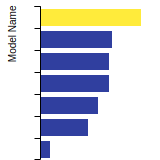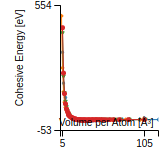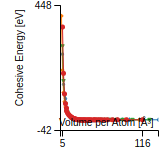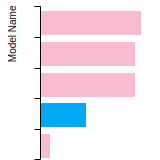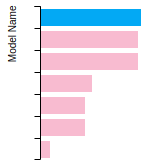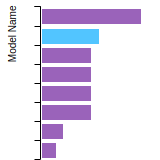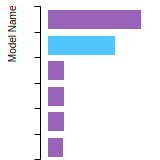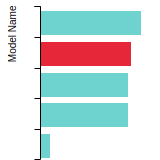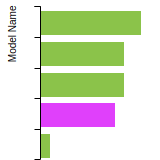 SW_WangStroudMarkworth_1989_CdTe__MO_786496821446_001
SW_WangStroudMarkworth_1989_CdTe__MO_786496821446_001
| Title
A single sentence description.
|
Stillinger-Weber potential for the Cd-Te system developed by Wang, Stroud and Markworth (1989) v001 |
|---|---|
| Description
A short description of the Model describing its key features including for example: type of model (pair potential, 3-body potential, EAM, etc.), modeled species (Ac, Ag, ..., Zr), intended purpose, origin, and so on.
|
Stillinger-Weber (SW) potential for the Cd-Te system developed by Wang, Stroud and Markworth (1989). This model corresponds to CdTe.sw distributed with the LAMMPS package. Note however that the parameter file format is different. |
| Species
The supported atomic species.
| Cd, Te |
| Disclaimer
A statement of applicability provided by the contributor, informing users of the intended use of this KIM Item.
|
None |
| Content Origin | LAMMPS package 22-Sep-2017 |
| Contributor |
Ellad B. Tadmor |
| Maintainer |
Ellad B. Tadmor |
| Implementer | Ellad B. Tadmor |
| Developer |
Z. Q. Wang D. Stroud A. J. Markworth |
| Published on KIM | 2021 |
| How to Cite |
This Model originally published in [1] is archived in OpenKIM [2-5]. [1] Wang ZQ, Stroud D, Markworth AJ. Monte Carlo study of the liquid CdTe surface. Phys Rev B. 1989;40(5):3129–32. doi:10.1103/PhysRevB.40.3129 — (Primary Source) A primary source is a reference directly related to the item documenting its development, as opposed to other sources that are provided as background information. [2] Tadmor EB, Wang ZQ, Stroud D, Markworth AJ. Stillinger-Weber potential for the Cd-Te system developed by Wang, Stroud and Markworth (1989) v001. OpenKIM; 2021. doi:10.25950/b4a5ed95 [3] Wen M, Afshar Y, Stillinger FH, Weber TA. Stillinger-Weber (SW) Model Driver v005. OpenKIM; 2021. doi:10.25950/934dca3e [4] Tadmor EB, Elliott RS, Sethna JP, Miller RE, Becker CA. The potential of atomistic simulations and the Knowledgebase of Interatomic Models. JOM. 2011;63(7):17. doi:10.1007/s11837-011-0102-6 [5] Elliott RS, Tadmor EB. Knowledgebase of Interatomic Models (KIM) Application Programming Interface (API). OpenKIM; 2011. doi:10.25950/ff8f563a Click here to download the above citation in BibTeX format. |
| Citations
This panel presents information regarding the papers that have cited the interatomic potential (IP) whose page you are on. The OpenKIM machine learning based Deep Citation framework is used to determine whether the citing article actually used the IP in computations (denoted by "USED") or only provides it as a background citation (denoted by "NOT USED"). For more details on Deep Citation and how to work with this panel, click the documentation link at the top of the panel. The word cloud to the right is generated from the abstracts of IP principle source(s) (given below in "How to Cite") and the citing articles that were determined to have used the IP in order to provide users with a quick sense of the types of physical phenomena to which this IP is applied. The bar chart shows the number of articles that cited the IP per year. Each bar is divided into green (articles that USED the IP) and blue (articles that did NOT USE the IP). Users are encouraged to correct Deep Citation errors in determination by clicking the speech icon next to a citing article and providing updated information. This will be integrated into the next Deep Citation learning cycle, which occurs on a regular basis. OpenKIM acknowledges the support of the Allen Institute for AI through the Semantic Scholar project for providing citation information and full text of articles when available, which are used to train the Deep Citation ML algorithm. |
This panel provides information on past usage of this interatomic potential (IP) powered by the OpenKIM Deep Citation framework. The word cloud indicates typical applications of the potential. The bar chart shows citations per year of this IP (bars are divided into articles that used the IP (green) and those that did not (blue)). The complete list of articles that cited this IP is provided below along with the Deep Citation determination on usage. See the Deep Citation documentation for more information. 
53 Citations (28 used)
Help us to determine which of the papers that cite this potential actually used it to perform calculations. If you know, click the .
USED (high confidence) M. A. M. Munshi, S. Majumder, M. Motalab, and S. Saha, “Insights into the mechanical properties and fracture mechanism of Cadmium Telluride nanowire,” Materials Research Express. 2019. link Times cited: 19 Abstract: Semiconducting nanowires (NWs), key building blocks in nanot… read more USED (high confidence) J. P. Toinin, A. Portavoce, M. Texier, M. Bertoglio, and K. Hoummada, “Te homogeneous precipitation in Ge dislocation loop vicinity,” Applied Physics Letters. 2016. link Times cited: 1 Abstract: High resolution microscopies were used to study the interact… read more USED (high confidence) D. Ward, X. W. Zhou, B. M. Wong, J. Zimmerman, and F. Doty, “Analytical bond-order potential for the cadmium telluride binary system.” 2012. link Times cited: 69 Abstract: CdTe and Cd${}_{1\ensuremath{-}x}$Zn${}_{x}$Te are the leadi… read more USED (high confidence) Scheerschmidt, Conrad, Kirmse, Schneider, and Neumann, “Electron microscope characterization of CdSe/ZnSe quantum dots based on molecular dynamics structure relaxations,” Ultramicroscopy. 2000. link Times cited: 20 USED (high confidence) Kirmse, Schneider, Scheerschmidt, Conrad, and Neumann, “TEM characterization of self‐organized CdSe/ZnSe quantum dots,” Journal of Microscopy. 1999. link Times cited: 10 Abstract: CdSe quantum dots (QDs) grown on ZnSe were investigated by v… read more USED (low confidence) T. T. Dung and M. Dung, “Evolution of Structure and Dynamic of Simulated CdTe Model According to the Melting Process,” Materials Science Forum. 2023. link Times cited: 0 Abstract: CdTe model containing 9955 atoms was built and simulated by … read more USED (low confidence) C. Liu, W. Yip, S. To, B. Chen, and J. Xu, “Numerical Investigation on the Effects of Grain Size and Grinding Depth on Nano-Grinding of Cadmium Telluride Using Molecular Dynamics Simulation,” Nanomaterials. 2023. link Times cited: 0 Abstract: Cadmium telluride (CdTe) is known as an important semiconduc… read more USED (low confidence) F. Sen et al., “Computational design of passivants for CdTe grain boundaries,” Solar Energy Materials and Solar Cells. 2021. link Times cited: 3 USED (low confidence) T. P. Sheerin, D. Tanner, and S. Schulz, “Atomistic analysis of piezoelectric potential fluctuations in zinc-blende InGaN/GaN quantum wells: A Stillinger-Weber potential based analysis,” Physical Review B. 2021. link Times cited: 4 Abstract: Title Atomistic analysis of piezoelectric potential fluctuat… read more USED (low confidence) M. Rahman, S. Mitra, M. Motalab, and T. Rakib, “Investigation on the Temperature and Size Dependent Mechanical Properties and Failure Behavior of Zinc Blende (ZB) Gallium Nitride (GaN) Semiconducting Nanowire,” 2020 IEEE Region 10 Symposium (TENSYMP). 2020. link Times cited: 3 Abstract: The mechanical properties of Gallium Nitride (GaN) nanowire … read more USED (low confidence) J. Guo et al., “Effect of selenium and chlorine co-passivation in polycrystalline CdSeTe devices,” Applied Physics Letters. 2019. link Times cited: 31 Abstract: CdTe-based solar cell efficiency has rapidly improved over t… read more USED (low confidence) H. Araghi, Z. Zabihi, P. Nayebi, and M. Ehsani, “Growth of CdTe on Si(100) surface by ionized cluster beam technique: Experimental and molecular dynamics simulation,” Nuclear Instruments & Methods in Physics Research Section B-beam Interactions With Materials and Atoms. 2016. link Times cited: 2 USED (low confidence) C. Sun et al., “Atomic and electronic structure of Lomer dislocations at CdTe bicrystal interface,” Scientific Reports. 2016. link Times cited: 38 USED (low confidence) Z. Zhang et al., “Deformation and crack mechanisms of nanotwinned cadmium telluride under cyclic nanoindentations,” Scripta Materialia. 2014. link Times cited: 6 USED (low confidence) H. Zhou, N. D. Duan, and B. Wang, “Synergistic and Strengthening Mechanism of Twin Boundaries under Nanoindentations for Cadmium Telluride Semiconductors,” Advanced Materials Research. 2014. link Times cited: 1 Abstract: In this study, eight nanotwinned cadmium telluride (CdTe or … read more USED (low confidence) X. Hu, R. Ciaglia, F. Pietrucci, G. A. Gallet, and W. Andreoni, “DFT-derived reactive potentials for the simulation of activated processes: the case of CdTe and CdTe:S.,” The journal of physical chemistry. B. 2014. link Times cited: 2 Abstract: We introduce a new ab initio derived reactive potential for … read more USED (low confidence) J. Farrell and D. Wales, “Clusters of coarse-grained water molecules.,” The journal of physical chemistry. A. 2014. link Times cited: 4 Abstract: Global optimization for molecular clusters can be significan… read more USED (low confidence) Z. Zhang, B. Wang, and X. Zhang, “A maximum in the hardness of nanotwinned cadmium telluride,” Scripta Materialia. 2014. link Times cited: 12 USED (low confidence) Z. Zhang, X. Zhang, X. Guo, F. Ye, and Y. Huo, “Hardening mechanism of twin boundaries during nanoindentation of soft-brittle CdTe crystals,” Scripta Materialia. 2013. link Times cited: 12 USED (low confidence) X. W. Zhou, D. Ward, J. E. Martin, F. Swol, J. Cruz-Campa, and D. Zubia, “Stillinger-Weber potential for the II-VI elements Zn-Cd-Hg-S-Se-Te,” Physical Review B. 2013. link Times cited: 86 Abstract: X. W. Zhou,1,* D. K. Ward,2 J. E. Martin,3 F. B. van Swol,4 … read more USED (low confidence) K. Kim et al., “Temperature-gradient annealing of CdZnTe under Te overpressure,” Journal of Crystal Growth. 2012. link Times cited: 25 USED (low confidence) F. Pietrucci, G. Gerra, and W. Andreoni, “CdTe surfaces: Characterizing dynamical processes with first-principles metadynamics,” Applied Physics Letters. 2010. link Times cited: 8 Abstract: We study dynamical processes at CdTe surfaces using ab initi… read more USED (low confidence) V. M. Glazov and L. Pavlova, “The structural peculiarities of the CdTe melt based on the results of the molecular dynamics,” Scandinavian Journal of Metallurgy. 2002. link Times cited: 2 Abstract: The characteristics of the structure of molten cadmium tellu… read more USED (low confidence) J. Oh and C. Grein, “Epitaxial growth simulations of CdTe(1 1 1)B on Si(0 0 1),” Journal of Crystal Growth. 1998. link Times cited: 15 USED (low confidence) J. E. Angelo and M. Mills, “Investigations of the misfit dislocation structure at a CdTe(001)/ga As(001) interface using Stillinger-Weber potentials and high-resolution transmission electron microscopy,” Philosophical Magazine. 1995. link Times cited: 15 Abstract: In this paper, Stillinger-Weber potentials which accurately … read more USED (low confidence) Z. Q. Wang, D. Stroud, and A. J. Markworth, “Thermal conductivity and viscosity of liquid CdTe: A theoretical study,” Scripta Metallurgica Et Materialia. 1994. link Times cited: 0 USED (low confidence) Z. Wang, W. Yu, and D. Stroud, “Monte Carlo and Molecular Dynamics Simulations of Liquid Semiconductor Surfaces,” MRS Proceedings. 1997. link Times cited: 0 Abstract: We have numerically studied the surface tension and surface … read more USED (low confidence) V. M. Glazov, L. Pavlova, and K. V. Rezontov, “Estimation of the Self and Mutual Diffusion Coefficients in Molten CdTe by a Molecular Dynamics Technique.” 1997. link Times cited: 0 NOT USED (low confidence) D. Fijan and M. Wilson, “Liquid state anomalies and the relationship to the crystalline phase diagram.,” Physical review. E. 2019. link Times cited: 5 Abstract: A relationship between the observation of a density anomaly … read more NOT USED (low confidence) P. Xiao, F. Ke, Y.-long Bai, and M. Zhou, “Deformation-induced blueshift in emission spectrum of CdTe quantum dot composites,” Composites Part B-engineering. 2017. link Times cited: 6 NOT USED (low confidence) A. Kelley, “Comparison of three empirical force fields for phonon calculations in CdSe quantum dots.,” The Journal of chemical physics. 2016. link Times cited: 11 Abstract: Three empirical interatomic force fields are parametrized us… read more NOT USED (low confidence) M. Chu et al., “Tellurium antisites in CdZnTe,” SPIE Optics + Photonics. 2001. link Times cited: 113 Abstract: The n-type conduction of CdTe and Cd0.96Zn0.04Te crystals gr… read more NOT USED (low confidence) M. Fiederle et al., “Modified compensation model of CdTe.” 1998. link Times cited: 178 Abstract: The traditional compensation model to explain the high resis… read more NOT USED (low confidence) C. Grein, J. Faurie, V. Bousquet, É. Tournié, R. Benedek, and T. D. Rubia, “Simulations of ZnSe/GaAs heteroepitaxial growth,” Journal of Crystal Growth. 1997. link Times cited: 24 NOT USED (low confidence) J. E. Angelo, W. Gerberich, G. Bratina, L. Sorba, and A. Franciosi, “Tem Investigations of CdTe/GaAs(001) Interfaces,” MRS Proceedings. 1992. link Times cited: 0 Abstract: In this study, cross-sectional transmission electron microsc… read more NOT USED (low confidence) J. Zheng, S. Ostrach, and Y. Kamotani, “A NUMERICAL STUDY OF LOW-GRAVITY FLOATING ZONE CRYSTAL GROWTH.” 1992. link Times cited: 0 NOT USED (high confidence) S. J. Honrao, S. Xie, and R. Hennig, “Augmenting machine learning of energy landscapes with local structural information,” Journal of Applied Physics. 2020. link Times cited: 13 Abstract: We present a machine learning approach for accurately predic… read more NOT USED (high confidence) M. Mińkowski, K. Hummer, and C. Dellago, “Cation interstitial diffusion in lead telluride and cadmium telluride studied by means of neural network potential based molecular dynamics simulations,” Journal of Physics: Condensed Matter. 2020. link Times cited: 1 Abstract: Using a recently developed approach to represent ab initio b… read more NOT USED (high confidence) K. Shen et al., “High efficiency CdTe solar cells with a through-thickness polycrystalline CdTe thin film,” RSC Advances. 2016. link Times cited: 21 Abstract: The absorber layer in a CdTe solar cell is made of a polycry… read more NOT USED (high confidence) F. Sen et al., “Atomistic simulations of grain boundaries in CdTe,” 2015 IEEE 42nd Photovoltaic Specialist Conference (PVSC). 2015. link Times cited: 4 Abstract: An improvement in efficiencies of polycrystalline CdTe can p… read more NOT USED (high confidence) X. W. Zhou et al., “A prediction of dislocation‐free CdTe/CdS photovoltaic multilayers via nano‐patterning and composition grading,” Progress in Photovoltaics: Research and Applications. 2015. link Times cited: 12 Abstract: Defects in multilayered films have long been a performance‐l… read more NOT USED (high confidence) X. Zhou, M. E. Foster, F. Swol, J. E. Martin, and B. M. Wong, “Analytical Bond-Order Potential for the Cd–Te–Se Ternary System,” Journal of Physical Chemistry C. 2014. link Times cited: 13 NOT USED (high confidence) X. W. Zhou, J. J. Chavez, J. Cruz-Campa, and D. Zubia, “Towards model-guided defect reduction in Cd1−xZnxTe/CdS solar cells: Development of molecular dynamics models,” 2014 IEEE 40th Photovoltaic Specialist Conference (PVSC). 2014. link Times cited: 0 Abstract: Cd1-xZnxTe/CdS solar cells are currently limited by material… read more NOT USED (high confidence) D. Ward, X. W. Zhou, B. M. Wong, F. Doty, and J. Zimmerman, “Analytical bond-order potential for the Cd-Zn-Te ternary system,” Physical Review B. 2012. link Times cited: 32 Abstract: CdTe/CdSe core/shell structured quantum dots do not suffer f… read more NOT USED (high confidence) C. Henager, F. Gao, S. Hu, G. Lin, E. Bylaska, and N. Zabaras, “Simulating Interface Growth and Defect Generation in CZT – Simulation State of the Art and Known Gaps.” 2012. link Times cited: 1 Abstract: This one-year, study topic project will survey and investiga… read more NOT USED (high confidence) R. Soundararajan and K. Lynn, “Effects of excess tellurium and growth parameters on the band gap defect levels in CdxZn1−xTe,” Journal of Applied Physics. 2012. link Times cited: 24 Abstract: This research summarizes an effective way to understand comp… read more NOT USED (high confidence) D. Ward, X. W. Zhou, B. M. Wong, F. Doty, and J. Zimmerman, “Accuracy of existing atomic potentials for the CdTe semiconductor compound.,” The Journal of chemical physics. 2011. link Times cited: 35 Abstract: CdTe and CdTe-based Cd(1-x)Zn(x)Te (CZT) alloys are importan… read more NOT USED (high confidence) Z. Zhang, A. Chatterjee, C. Grein, A. Ciani, and P. Chung, “Molecular Dynamics Simulation of MBE Growth
of CdTe/ZnTe/Si,” Journal of Electronic Materials. 2011. link Times cited: 6 NOT USED (high confidence) L. Larini, L. Lu, and G. Voth, “The multiscale coarse-graining method. VI. Implementation of three-body coarse-grained potentials.,” The Journal of chemical physics. 2010. link Times cited: 111 Abstract: Many methodologies have been proposed to build reliable and … read more NOT USED (high confidence) S. A. Kolosov, Y. Klevkov, A. Klokov, V. Krivobok, and A. Sharkov, “Modification of the spectrum of electronic states in polycrystalline p-CdTe as a result of annealing in Cd vapors or natural aging,” Semiconductors. 2009. link Times cited: 1 NOT USED (high confidence) W. Yao, F. Dai, and B. Wei, “Monte Carlo simulation for surface tension of liquid Co–Mo alloys,” Philosophical Magazine Letters. 2007. link Times cited: 5 Abstract: The surface tension of liquid Co–Mo alloys is calculated by … read more NOT USED (high confidence) S. Nakamura and T. Hibiya, “Thermophysical properties data on molten semiconductors,” International Journal of Thermophysics. 1992. link Times cited: 64 NOT USED (definite) E. Chowdhury, M. Rahman, R. Jayan, and M. M. Islam, “Atomistic investigation on the mechanical properties and failure behavior of zinc-blende cadmium selenide (CdSe) nanowire,” Computational Materials Science. 2021. link Times cited: 2 |
| Funding | Not available |
| Short KIM ID
The unique KIM identifier code.
| MO_786496821446_001 |
| Extended KIM ID
The long form of the KIM ID including a human readable prefix (100 characters max), two underscores, and the Short KIM ID. Extended KIM IDs can only contain alpha-numeric characters (letters and digits) and underscores and must begin with a letter.
| SW_WangStroudMarkworth_1989_CdTe__MO_786496821446_001 |
| DOI |
10.25950/b4a5ed95 https://doi.org/10.25950/b4a5ed95 https://commons.datacite.org/doi.org/10.25950/b4a5ed95 |
| KIM Item Type
Specifies whether this is a Portable Model (software implementation of an interatomic model); Portable Model with parameter file (parameter file to be read in by a Model Driver); Model Driver (software implementation of an interatomic model that reads in parameters).
| Portable Model using Model Driver SW__MD_335816936951_005 |
| Driver | SW__MD_335816936951_005 |
| KIM API Version | 2.0 |
| Potential Type | sw |
| Previous Version | SW_WangStroudMarkworth_1989_CdTe__MO_786496821446_000 |
| Grade | Name | Category | Brief Description | Full Results | Aux File(s) |
|---|---|---|---|---|---|
| P | vc-species-supported-as-stated | mandatory | The model supports all species it claims to support; see full description. |
Results | Files |
| P | vc-periodicity-support | mandatory | Periodic boundary conditions are handled correctly; see full description. |
Results | Files |
| P | vc-permutation-symmetry | mandatory | Total energy and forces are unchanged when swapping atoms of the same species; see full description. |
Results | Files |
| A | vc-forces-numerical-derivative | consistency | Forces computed by the model agree with numerical derivatives of the energy; see full description. |
Results | Files |
| P | vc-dimer-continuity-c1 | informational | The energy versus separation relation of a pair of atoms is C1 continuous (i.e. the function and its first derivative are continuous); see full description. |
Results | Files |
| P | vc-objectivity | informational | Total energy is unchanged and forces transform correctly under rigid-body translation and rotation; see full description. |
Results | Files |
| P | vc-inversion-symmetry | informational | Total energy is unchanged and forces change sign when inverting a configuration through the origin; see full description. |
Results | Files |
| N/A | vc-memory-leak | informational | The model code does not have memory leaks (i.e. it releases all allocated memory at the end); see full description. |
Results | Files |
| P | vc-thread-safe | mandatory | The model returns the same energy and forces when computed in serial and when using parallel threads for a set of configurations. Note that this is not a guarantee of thread safety; see full description. |
Results | Files |
| P | vc-unit-conversion | mandatory | The model is able to correctly convert its energy and/or forces to different unit sets; see full description. |
Results | Files |
BCC Lattice Constant
This bar chart plot shows the mono-atomic body-centered cubic (bcc) lattice constant predicted by the current model (shown in the unique color) compared with the predictions for all other models in the OpenKIM Repository that support the species. The vertical bars show the average and standard deviation (one sigma) bounds for all model predictions. Graphs are generated for each species supported by the model.
Cohesive Energy Graph
This graph shows the cohesive energy versus volume-per-atom for the current mode for four mono-atomic cubic phases (body-centered cubic (bcc), face-centered cubic (fcc), simple cubic (sc), and diamond). The curve with the lowest minimum is the ground state of the crystal if stable. (The crystal structure is enforced in these calculations, so the phase may not be stable.) Graphs are generated for each species supported by the model.
Diamond Lattice Constant
This bar chart plot shows the mono-atomic face-centered diamond lattice constant predicted by the current model (shown in the unique color) compared with the predictions for all other models in the OpenKIM Repository that support the species. The vertical bars show the average and standard deviation (one sigma) bounds for all model predictions. Graphs are generated for each species supported by the model.
Dislocation Core Energies
This graph shows the dislocation core energy of a cubic crystal at zero temperature and pressure for a specific set of dislocation core cutoff radii. After obtaining the total energy of the system from conjugate gradient minimizations, non-singular, isotropic and anisotropic elasticity are applied to obtain the dislocation core energy for each of these supercells with different dipole distances. Graphs are generated for each species supported by the model.
(No matching species)FCC Elastic Constants
This bar chart plot shows the mono-atomic face-centered cubic (fcc) elastic constants predicted by the current model (shown in blue) compared with the predictions for all other models in the OpenKIM Repository that support the species. The vertical bars show the average and standard deviation (one sigma) bounds for all model predictions. Graphs are generated for each species supported by the model.
FCC Lattice Constant
This bar chart plot shows the mono-atomic face-centered cubic (fcc) lattice constant predicted by the current model (shown in red) compared with the predictions for all other models in the OpenKIM Repository that support the species. The vertical bars show the average and standard deviation (one sigma) bounds for all model predictions. Graphs are generated for each species supported by the model.
FCC Stacking Fault Energies
This bar chart plot shows the intrinsic and extrinsic stacking fault energies as well as the unstable stacking and unstable twinning energies for face-centered cubic (fcc) predicted by the current model (shown in blue) compared with the predictions for all other models in the OpenKIM Repository that support the species. The vertical bars show the average and standard deviation (one sigma) bounds for all model predictions. Graphs are generated for each species supported by the model.
(No matching species)FCC Surface Energies
This bar chart plot shows the mono-atomic face-centered cubic (fcc) relaxed surface energies predicted by the current model (shown in blue) compared with the predictions for all other models in the OpenKIM Repository that support the species. The vertical bars show the average and standard deviation (one sigma) bounds for all model predictions. Graphs are generated for each species supported by the model.
(No matching species)SC Lattice Constant
This bar chart plot shows the mono-atomic simple cubic (sc) lattice constant predicted by the current model (shown in the unique color) compared with the predictions for all other models in the OpenKIM Repository that support the species. The vertical bars show the average and standard deviation (one sigma) bounds for all model predictions. Graphs are generated for each species supported by the model.
Cubic Crystal Basic Properties Table
Species: CdSpecies: Te
Creators:
Contributor: karls
Publication Year: 2019
DOI: https://doi.org/10.25950/64cb38c5
This Test Driver uses LAMMPS to compute the cohesive energy of a given monoatomic cubic lattice (fcc, bcc, sc, or diamond) at a variety of lattice spacings. The lattice spacings range from a_min (=a_min_frac*a_0) to a_max (=a_max_frac*a_0) where a_0, a_min_frac, and a_max_frac are read from stdin (a_0 is typically approximately equal to the equilibrium lattice constant). The precise scaling and number of lattice spacings sampled between a_min and a_0 (a_0 and a_max) is specified by two additional parameters passed from stdin: N_lower and samplespacing_lower (N_upper and samplespacing_upper). Please see README.txt for further details.
| Test | Test Results | Link to Test Results page | Benchmark time
Usertime multiplied by the Whetstone Benchmark. This number can be used (approximately) to compare the performance of different models independently of the architecture on which the test was run.
Measured in Millions of Whetstone Instructions (MWI) |
|---|---|---|---|
| Cohesive energy versus lattice constant curve for bcc Cd v004 | view | 1969 | |
| Cohesive energy versus lattice constant curve for bcc Te v004 | view | 2168 | |
| Cohesive energy versus lattice constant curve for diamond Cd v004 | view | 2258 | |
| Cohesive energy versus lattice constant curve for diamond Te v004 | view | 2198 | |
| Cohesive energy versus lattice constant curve for fcc Cd v004 | view | 2069 | |
| Cohesive energy versus lattice constant curve for fcc Te v004 | view | 2282 | |
| Cohesive energy versus lattice constant curve for sc Cd v004 | view | 2616 | |
| Cohesive energy versus lattice constant curve for sc Te v004 | view | 2128 |
Creators: Junhao Li and Ellad Tadmor
Contributor: tadmor
Publication Year: 2019
DOI: https://doi.org/10.25950/5853fb8f
Computes the cubic elastic constants for some common crystal types (fcc, bcc, sc, diamond) by calculating the hessian of the energy density with respect to strain. An estimate of the error associated with the numerical differentiation performed is reported.
| Test | Test Results | Link to Test Results page | Benchmark time
Usertime multiplied by the Whetstone Benchmark. This number can be used (approximately) to compare the performance of different models independently of the architecture on which the test was run.
Measured in Millions of Whetstone Instructions (MWI) |
|---|---|---|---|
| Elastic constants for bcc Cd at zero temperature v006 | view | 2945 | |
| Elastic constants for bcc Te at zero temperature v006 | view | 2819 | |
| Elastic constants for diamond Cd at zero temperature v001 | view | 7518 | |
| Elastic constants for diamond Te at zero temperature v001 | view | 8552 | |
| Elastic constants for fcc Cd at zero temperature v006 | view | 2819 | |
| Elastic constants for fcc Te at zero temperature v006 | view | 3070 | |
| Elastic constants for sc Cd at zero temperature v006 | view | 2694 | |
| Elastic constants for sc Te at zero temperature v006 | view | 6985 |
Creators:
Contributor: ilia
Publication Year: 2024
DOI: https://doi.org/10.25950/2f2c4ad3
Computes the equilibrium crystal structure and energy for an arbitrary crystal at zero temperature and applied stress by performing symmetry-constrained relaxation. The crystal structure is specified using the AFLOW prototype designation. Multiple sets of free parameters corresponding to the crystal prototype may be specified as initial guesses for structure optimization. No guarantee is made regarding the stability of computed equilibria, nor that any are the ground state.
| Test | Test Results | Link to Test Results page | Benchmark time
Usertime multiplied by the Whetstone Benchmark. This number can be used (approximately) to compare the performance of different models independently of the architecture on which the test was run.
Measured in Millions of Whetstone Instructions (MWI) |
|---|---|---|---|
| Equilibrium crystal structure and energy for Te in AFLOW crystal prototype A_cP1_221_a v002 | view | 83780 | |
| Equilibrium crystal structure and energy for Te in AFLOW crystal prototype A_oC2_65_a v002 | view | 355203 | |
| Equilibrium crystal structure and energy for CdTe in AFLOW crystal prototype AB_cF8_216_a_c v002 | view | 112345 | |
| Equilibrium crystal structure and energy for CdTe in AFLOW crystal prototype AB_cF8_225_a_b v002 | view | 107265 | |
| Equilibrium crystal structure and energy for CdTe in AFLOW crystal prototype AB_hP4_186_b_b v002 | view | 56021 | |
| Equilibrium crystal structure and energy for CdTe in AFLOW crystal prototype AB_oC8_63_c_c v002 | view | 69935 |
Creators:
Contributor: ilia
Publication Year: 2025
DOI: https://doi.org/10.25950/866c7cfa
Computes the equilibrium crystal structure and energy for an arbitrary crystal at zero temperature and applied stress by performing symmetry-constrained relaxation. The crystal structure is specified using the AFLOW prototype designation. Multiple sets of free parameters corresponding to the crystal prototype may be specified as initial guesses for structure optimization. No guarantee is made regarding the stability of computed equilibria, nor that any are the ground state.
| Test | Test Results | Link to Test Results page | Benchmark time
Usertime multiplied by the Whetstone Benchmark. This number can be used (approximately) to compare the performance of different models independently of the architecture on which the test was run.
Measured in Millions of Whetstone Instructions (MWI) |
|---|---|---|---|
| Equilibrium crystal structure and energy for Cd in AFLOW crystal prototype A_hP2_194_c v003 | view | 152447 |
Creators: Daniel S. Karls and Junhao Li
Contributor: karls
Publication Year: 2019
DOI: https://doi.org/10.25950/2765e3bf
Equilibrium lattice constant and cohesive energy of a cubic lattice at zero temperature and pressure.
| Test | Test Results | Link to Test Results page | Benchmark time
Usertime multiplied by the Whetstone Benchmark. This number can be used (approximately) to compare the performance of different models independently of the architecture on which the test was run.
Measured in Millions of Whetstone Instructions (MWI) |
|---|---|---|---|
| Equilibrium zero-temperature lattice constant for bcc Cd v007 | view | 1973 | |
| Equilibrium zero-temperature lattice constant for bcc Te v007 | view | 1660 | |
| Equilibrium zero-temperature lattice constant for diamond Cd v007 | view | 2913 | |
| Equilibrium zero-temperature lattice constant for diamond Te v007 | view | 2318 | |
| Equilibrium zero-temperature lattice constant for fcc Cd v007 | view | 2506 | |
| Equilibrium zero-temperature lattice constant for fcc Te v007 | view | 2287 | |
| Equilibrium zero-temperature lattice constant for sc Cd v007 | view | 2506 | |
| Equilibrium zero-temperature lattice constant for sc Te v007 | view | 2193 |
LatticeConstantHexagonalEnergy__TD_942334626465_005
| Test | Error Categories | Link to Error page |
|---|---|---|
| Equilibrium lattice constants for hcp Cd v005 | other | view |
| SW_WangStroudMarkworth_1989_CdTe__MO_786496821446_001.txz | Tar+XZ | Linux and OS X archive |
| SW_WangStroudMarkworth_1989_CdTe__MO_786496821446_001.zip | Zip | Windows archive |
This Model requires a Model Driver. Archives for the Model Driver SW__MD_335816936951_005 appear below.
| SW__MD_335816936951_005.txz | Tar+XZ | Linux and OS X archive |
| SW__MD_335816936951_005.zip | Zip | Windows archive |

